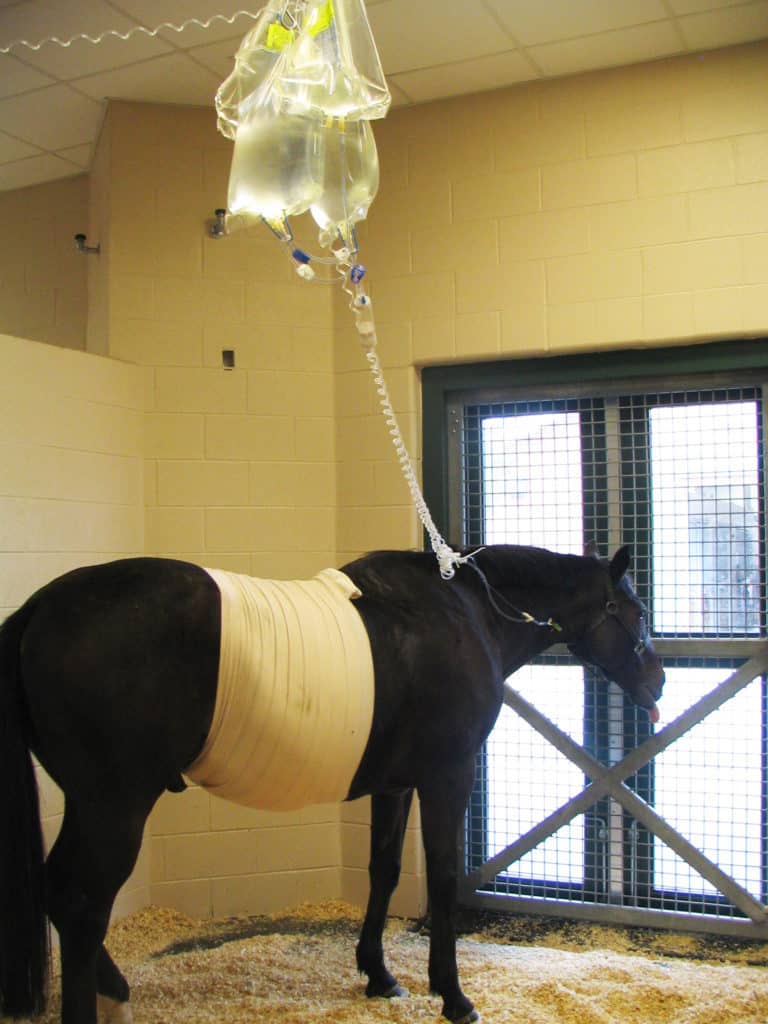
Unraveling the Link Between Glucose and Insulin in Sick Horses
Researchers found that very ill horses with high glucose and insulin levels were more likely to survive, while those with high glucose but low insulin were more likely to die.

Researchers found that very ill horses with high glucose and insulin levels were more likely to survive, while those with high glucose but low insulin were more likely to die.

Researchers found that 58% of responding hospitals said they consult a nutritional adviser about feeding their patients and 21% reportedly feed all patients the same type of feed.

Surgical site infection risk had little to do with the amount or kind of bacteria present at the incision before, during, or after surgery, researchers found.

Taylor Equine Hospital assistant Ali Harman’s dream job involves clinic cases, farm calls, and foal watch.

Critical conditions such as colic, injuries, and dehydration can strike when you’re at a competition with your horse. Here’s how to handle them.

Learn about special characteristics of each part of the horse’s digestive tract and different medical conditions that can develop there.

While either the small or large intestines are usually the focus of colic discussions, the junction of the small intestine and cecum at the start of the large intestine—the ileocecal junction—also deserves mention.

Colic incidence is relatively low, affecting only about 3% of the Kenyan equine population each year. But researchers say that figure doesn’t include many cases not reported to vets and treated with home remedies.

Find out why this grass is a popular hay for horses and how, in some cases, it might cause problems.

Colic often needs immediate veterinary intervention. Dr. Louise Southwood offers advice for rural horse owners who live far away from their veterinarians.

Drs. Anthony Blikslager and Louise Southwood describe the reasons why older horses are at risk for colic.

Post-foaling colic is a significant threat for mares. Dr. Anthony Blikslager describes what to look for and how to respond if your mare colics following foaling.

Dr. Anthony Blikslager reviews what to look for if you think your horse is colicking.

Most bloodworm-associated colic patients did not exhibit severe colic signs, which could make this potentially deadly condition difficult to diagnose, researchers found.

Colic is the No. 1 killer of horses. Learn how to spot the signs and give your horse the greatest chance at survival.

Special maintenance and nutrition can help your horse get back to (and stay in) good health after a colic episode.
Stay on top of the most recent Horse Health news with
"*" indicates required fields